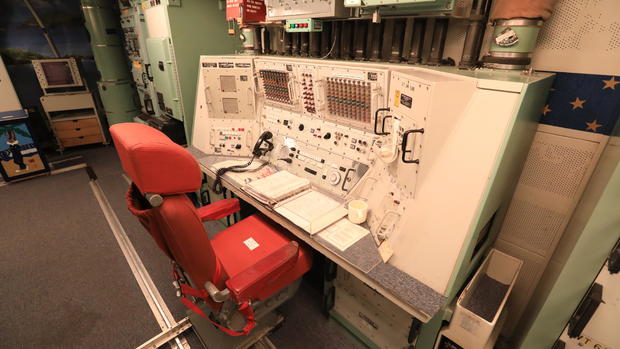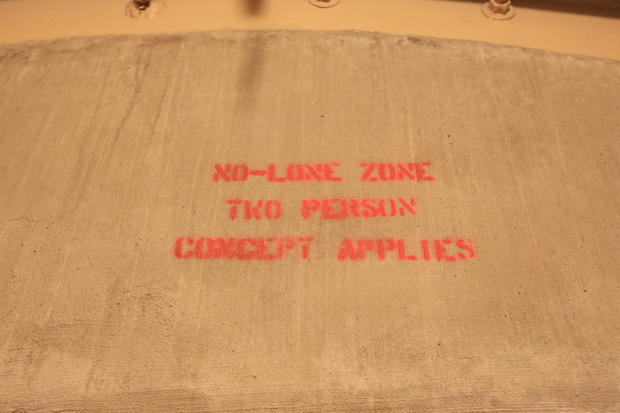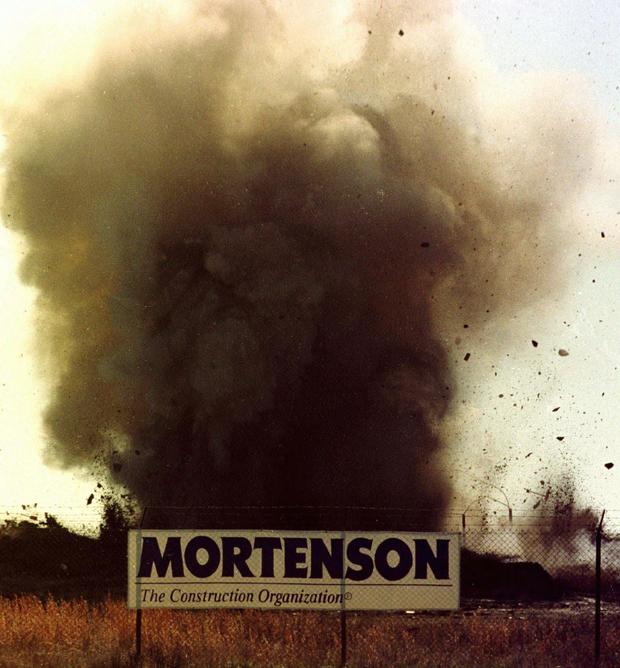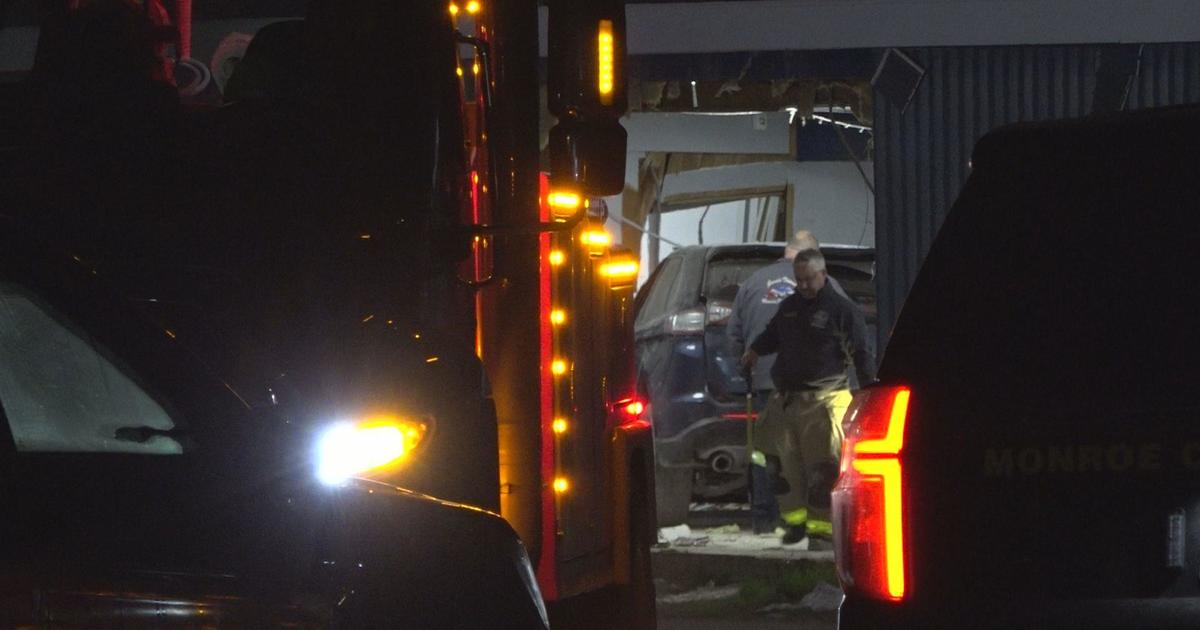Inside Oscar-Zero, a nuclear missile bunker frozen in time
COOPERSTOWN, N.D. -- Guinn Hinman makes her living by managing about half of the 52 state historic sites around North Dakota. Among them are a frontier-era courthouse, museums, and archaeological sites. None present the kind of challenges she encounters when giving tours of an abandoned nuclear missile bunker several stories below a grass field just outside Cooperstown, about 90 miles northwest of Fargo, N.D.
“It’s a challenge to talk about nuclear weapons in a fun, family-centered format,” says Hinman. “It’s hard to talk to children and get them to understand the gravity of nuclear weapons.”
On a cold and gray winter day, Hinman gave CBS News a private tour of the Ronald Reagan Minuteman Missile State Historic Site – a place frozen in time. It was known as Oscar-Zero when it was part of America’s Cold War nuclear defense shield. From 1965 until 1997, two U.S. Air Force officers were given the tremendous responsibility of working 24-hour shifts in this concrete-hardened bunker with access to keys that could launch an arsenal of intercontinental ballistic missiles.
“What I always like to stress to people down here is that these Missileers (as they called themselves) didn’t know how many missiles they were launching, where they were going, or why they were launching them,” says Hinman. “They were purposefully kept in the dark so that they wouldn’t hesitate.”
She says the average age of the Missileers was 23 years old.
“That’s a lot of responsibility on their shoulders.”
As visitors approach Oscar-Zero from Highway 45, the first thing they notice is a large fence, with a one-story yellow structure on the other side that looks a lot like a large house with a separate garage. What visitors can’t see from the road is that the structures are sitting on top of two egg-shaped capsules buried below.
“During construction they excavated an area the size of a football field, 60 feet deep, to build the underground portion of the facility.”
The tour includes taking a freight elevator down below where it connects the Launch Control Equipment Building that houses the infrastructure the Missileers needed to stay alive and the entrance to the Launch Control Center -- which you enter through a 7-ton blast door that during the Cold War could only be opened from the inside.
“So if someone was to get past all the topside security personnel, somehow get down here, they’re still not going to be able to get into the capsule unless someone lets them in,” says Hinman. “And this is a NO LONE ZONE. What that means is that you are not allowed in this capsule by yourself at any given time. You had to have your fellow officer, your fellow Missileer with you at all times.”
Hinman says the dismantling of these underground facilities began shortly after Presidents George H. W. Bush and Mikhail Gorbachev signed the START treaty in July 1991.
“The silos were imploded, and those missiles were removed,” says Hinman.
The Pentagon shut down 50 percent of the missile wings in the Great Plains, leaving 150 nuclear missiles in the ground in North Dakota.
Oscar-Zero was deactivated on July 17, 1997. Hinman says the State Historical Society of North Dakota spent several years negotiating to acquire the alert facility and November-33, a nearby launch silo that held the actual Minuteman II nuclear missiles. Since opening in 2007, Hinman says an average of 5,000 tourists visit the sites each year.
When asked if visitors ever confuse her museum with the one 1,500 miles east in Cooperstown, NY, she chuckles.
“Not that often. Missile site? Baseball Hall of Fame? They are pretty different.”
“The number one question we get out here, is people ask ‘where are the missiles?’ They think they’re in the garage, they’re in the basement, or in the yard.” Hinman tells those visitors that Oscar-Zero housed the personnel and November-33 was the launch facility.
“Each alert facility was responsible for 10 nuclear missiles.”
During the Cold War, in addition to the two Missileers, Oscar-Zero was home to 8 other military personnel according to Hinman, including “a six-person security team, cook and facility manager.” Initially all men, the facility added female personnel in the 80s.
Hinman says since Donald Trump became president, visitors are more interested in the “ramifications of nuclear weapons, and their interest in the nuclear arsenal of the United States. Basically, Donald Trump has nuclear weapons back in the news.”
“We fully accept that we appeal to a certain audience out here: Cold War enthusiasts and there are not a lot of Cold War sites,” says Hinman. “We’re part of that niche and that is really great.”
But managing the site has its drawbacks, too, according to Hinman.
“We get a lot of weird phone calls. We’ve gotten the occasional protest phone call. People that think they can call an actual missile site and tell us to shut down, and we’re like, ‘No, we’re a museum.’”












